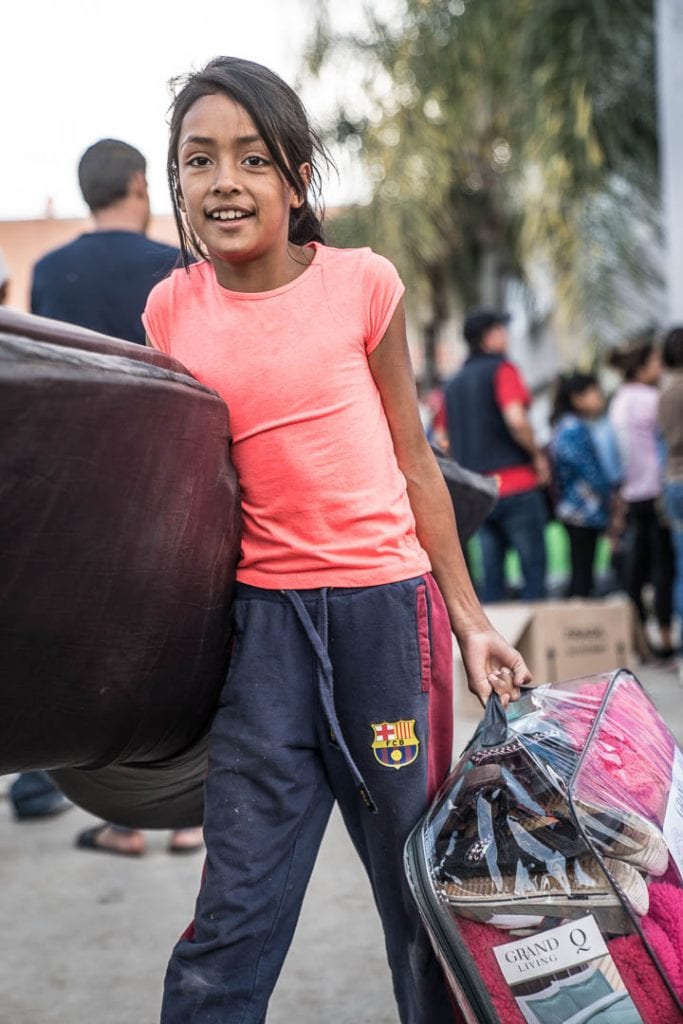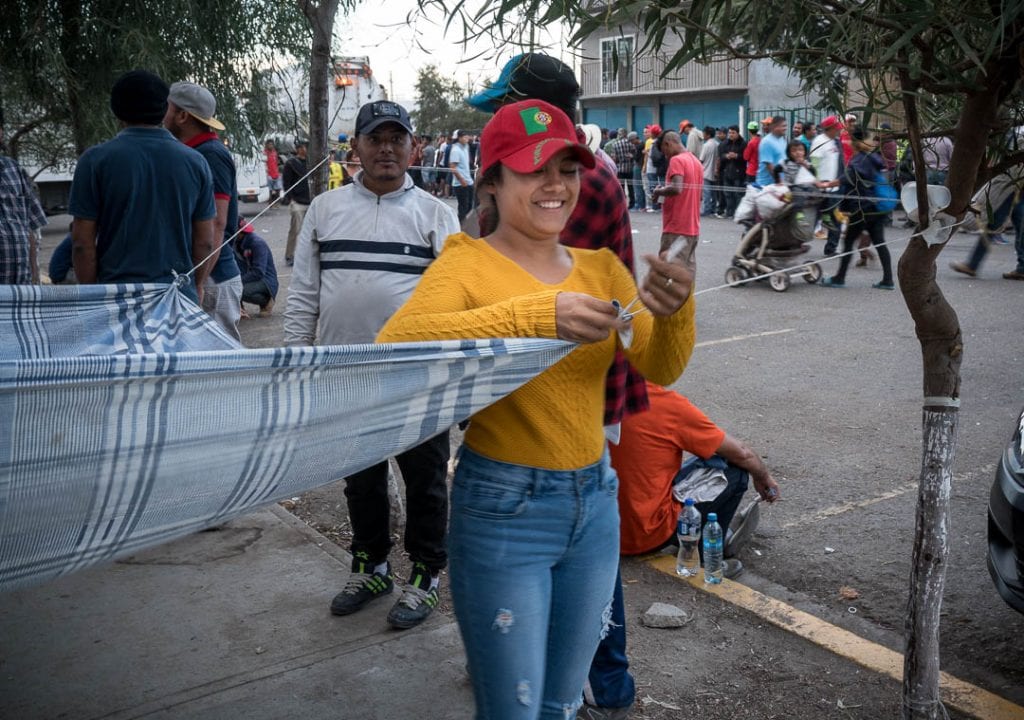The Tijuana Migrant Camp Reaches Capacity, What’s Next?
By Ken Alexander

HAVANA TIMES – On Wednesday the migrant camp in Tijuana, Mexico, near the United States border, exploded beyond capacity. New caravan arrivals from Mexicali brought the number of migrants inside the camp to over 4,000.
Outside of the camp primitive shelters started to be erected against the fence. Marisol, a young Honduran woman who had just arrived via Mexicali, showed me her orange wrist band. She pointed to a number. “This number means I cannot go inside of the camp to sleep.” But she and her three friends hang their wool blanket between the fence and two trees with big smiles. They had arrived.
Villages have been created inside of the camp. Days before, the early arrivals set up camp far from the toilets and showers on concrete walkways and under large canopies provided by the government. When the rains come, they will fare much better. The best villages are in the small fenced-in garden areas away from the constant foot traffic. Here some of the men have cut limbs from the trees and created small forts.
In the middle of this western side of the camp is a playground with the constant laughter of children. Everyone is respectful of that space. Here, life feels normal.
As I walk toward the eastern part of the camp the conditions become more primitive. This is where the new arrivals set up camp. First they set up along the perimeter and then, with no choice, out into the open field. The camp has moved rapidly toward the flood of water from the showers and the line of latrines.

The ground is hard. A young couple tries desperately to dig a hole with a small knife in order to plant a stake for their primitive tent. I look around but there are no tools to dig with, no hammers with which to pound the stakes into the ground. However, hundreds of previous arrivals have managed to do so. The sense of community that seemed to exist just days ago seems to be deteriorating as resources have all but disappeared.
The western part of the camp has developed into an established community with music, card games, games for the children and a sense of place. The migrants seem settled in for the long term. Out in the soccer field exhausted new arrivals seek out what little land is left as they are pushed closer and closer towards the latrines.

The coughing is much more pervasive today as even the police, organizers and aid workers are coughing. Today will be the last day I enter without a mask.
The smell is becoming overwhelming. It is hard to place, but it is the smell of thousands of dirty wool blankets and unwashed clothing and people. It hangs heavy in the air. As I walk toward the open field the smell of overflowing latrines is unbearable.
In the afternoon a loud, joyful cry is heard from inside of the camp. The truck that will pump the latrines has arrived. But the problem is that the water from the showers has created a foot deep lake all around the latrines for about 6 meters. The pump truck gets stuck in the mud. However, the community jumps to action and pushes the truck back out.
But, how long can this last? The pond grows in size daily and the mud gets deeper. Everyone has to cross this toxic swamp in bare feet to access the latrines. A serious health crisis is looming.

The good news is that the Mexican Marines have arrived. They have set up at the far end of the street outside of the camp. Well organized, they have stacks of supplies and the ability to prepare and serve meals for hours. Instead of the chaos that I observed earlier in the week, the Marines only allow 20 people at a time to approach the food truck. Plates are distributed in an orderly fashion.
The line of people waiting for food, mostly men, stretches for a hundred meters. Maybe 2,000 people calmly wait for dinner. I comment that there is no way that everyone will be fed tonight. But as I return to the street’s hours later, they are still serving, and the line is just as long. The Marines are prepared. The food supply appears endless.

At the front entrance of the sports complex, where migrants have to register, a young Honduran woman has arrived alone via Mexicali. She was delayed because she was hospitalized with a miscarriage. It is dark and it is cold. She is told there is no room inside the camp. It is now closed to new arrivals. She asks for a blanket and is told there are no more.
The woman asks where she can go and she is told they do not know. The camp is over capacity. She stands outside of the camp, all alone, just staring at the entrance. After four weeks of traveling from Honduras this is what she finds.
—–
NOTE: I heard today that those people who could not get in to the camp late last night were finally let in a 3 a.m. when it started to rain.
Also see: What’s Happening at the Tijuana Migrant Camp
Click on the thumbnails below to view all the photos in this gallery. On your PC or laptop, you can use the directional arrows on the keyboard to move within the gallery. On cell phones use the keys on the screen.


























Excellent reporting and photos, showing the human side as well as the inevitable disaster looming in the not too distant future. Also a spot on comment by Carlyle.
Whoever had anything to do with organizing this “caravan” ought to be jailed. These people have been mislead and misinformed. Only misery lies in front of them. Of course ones heart bleeds for them, but that doesn’t resolve the stupidity of the affair. There are legal ways of applying for immigration into other countries including the US. and those seeking immigration join the waiting line. But the idea that 4,000 people or more ought to be able to arrive at a country’s border and promptly be admitted jumping the waiting list is ridiculous. Yes, those who understandably dislike or detest Trump will be enjoying the problem for the US, but that is self satisfaction not actual concern. The professional left wing agitators will however gain much satisfaction, just as Tariq Ali did during the riots in Paris, France during the 60’s. Such people are the real exploiters.